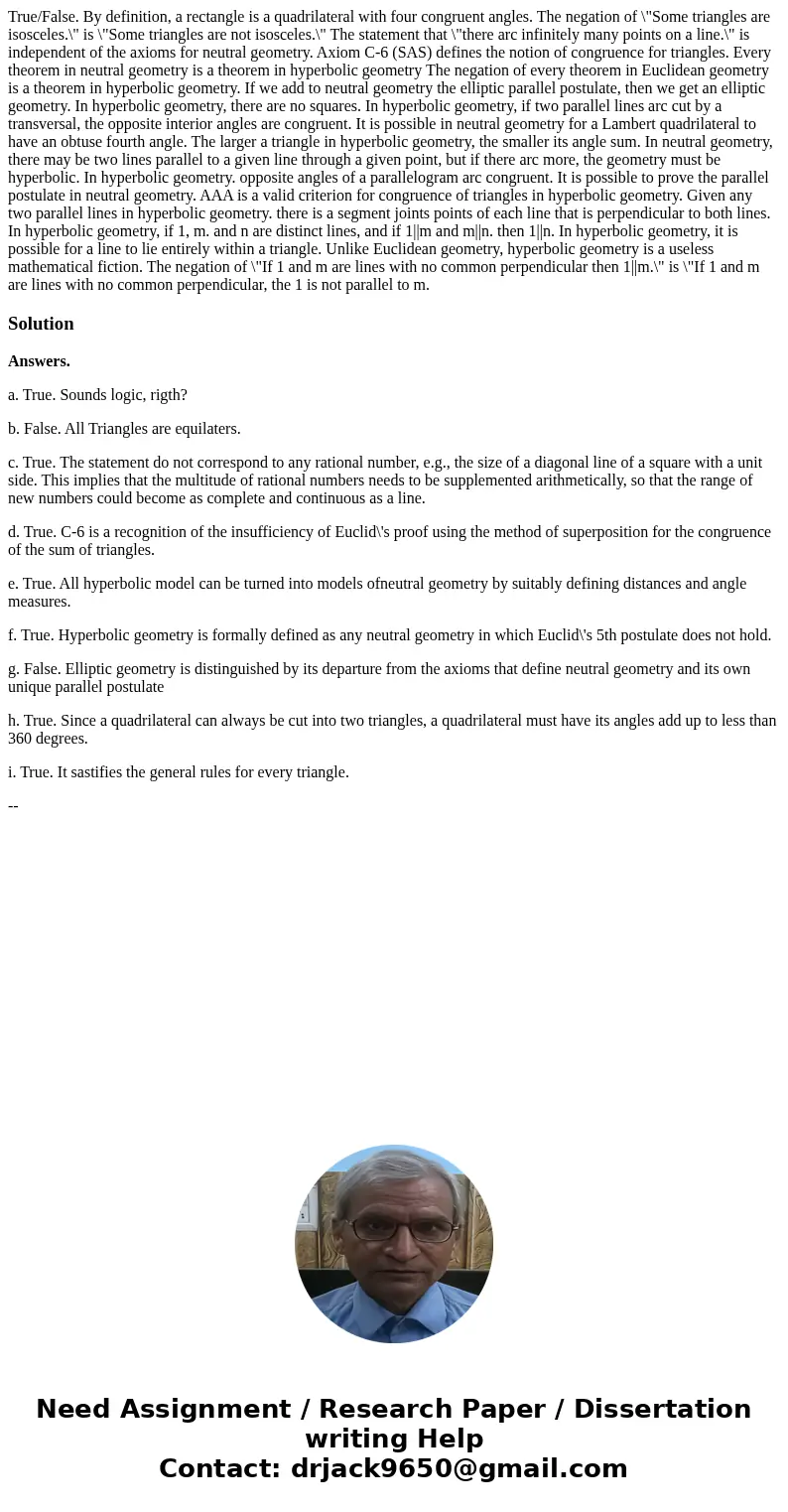True/False. By definition, a rectangle is a quadrilateral with four congruent angles. The negation of \"Some triangles are isosceles.\" is \"Some triangles are not isosceles.\" The statement that \"there arc infinitely many points on a line.\" is independent of the axioms for neutral geometry. Axiom C-6 (SAS) defines the notion of congruence for triangles. Every theorem in neutral geometry is a theorem in hyperbolic geometry The negation of every theorem in Euclidean geometry is a theorem in hyperbolic geometry. If we add to neutral geometry the elliptic parallel postulate, then we get an elliptic geometry. In hyperbolic geometry, there are no squares. In hyperbolic geometry, if two parallel lines arc cut by a transversal, the opposite interior angles are congruent. It is possible in neutral geometry for a Lambert quadrilateral to have an obtuse fourth angle. The larger a triangle in hyperbolic geometry, the smaller its angle sum. In neutral geometry, there may be two lines parallel to a given line through a given point, but if there arc more, the geometry must be hyperbolic. In hyperbolic geometry. opposite angles of a parallelogram arc congruent. It is possible to prove the parallel postulate in neutral geometry. AAA is a valid criterion for congruence of triangles in hyperbolic geometry. Given any two parallel lines in hyperbolic geometry. there is a segment joints points of each line that is perpendicular to both lines. In hyperbolic geometry, if 1, m. and n are distinct lines, and if 1||m and m||n. then 1||n. In hyperbolic geometry, it is possible for a line to lie entirely within a triangle. Unlike Euclidean geometry, hyperbolic geometry is a useless mathematical fiction. The negation of \"If 1 and m are lines with no common perpendicular then 1||m.\" is \"If 1 and m are lines with no common perpendicular, the 1 is not parallel to m.
Answers.
a. True. Sounds logic, rigth?
b. False. All Triangles are equilaters.
c. True. The statement do not correspond to any rational number, e.g., the size of a diagonal line of a square with a unit side. This implies that the multitude of rational numbers needs to be supplemented arithmetically, so that the range of new numbers could become as complete and continuous as a line.
d. True. C-6 is a recognition of the insufficiency of Euclid\'s proof using the method of superposition for the congruence of the sum of triangles.
e. True. All hyperbolic model can be turned into models ofneutral geometry by suitably defining distances and angle measures.
f. True. Hyperbolic geometry is formally defined as any neutral geometry in which Euclid\'s 5th postulate does not hold.
g. False. Elliptic geometry is distinguished by its departure from the axioms that define neutral geometry and its own unique parallel postulate
h. True. Since a quadrilateral can always be cut into two triangles, a quadrilateral must have its angles add up to less than 360 degrees.
i. True. It sastifies the general rules for every triangle.
--

 Homework Sourse
Homework Sourse